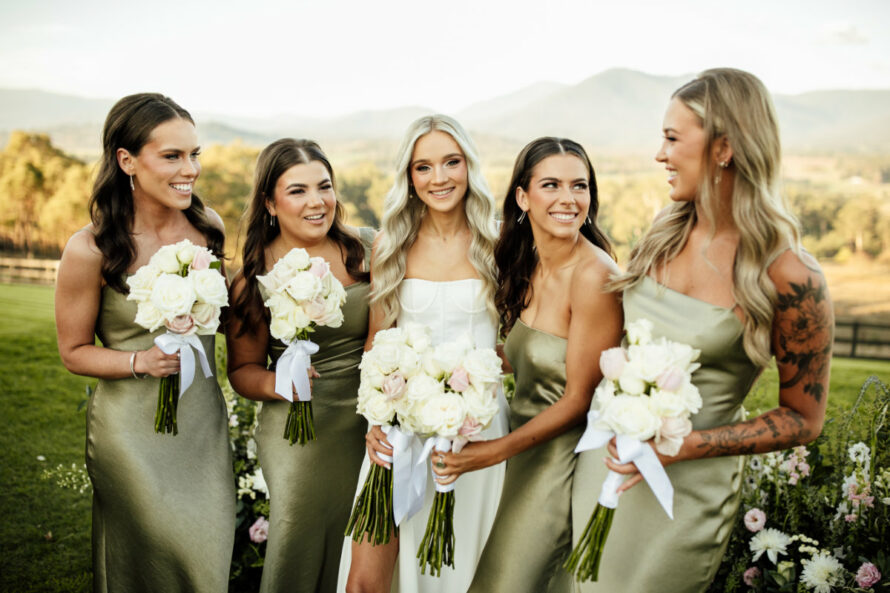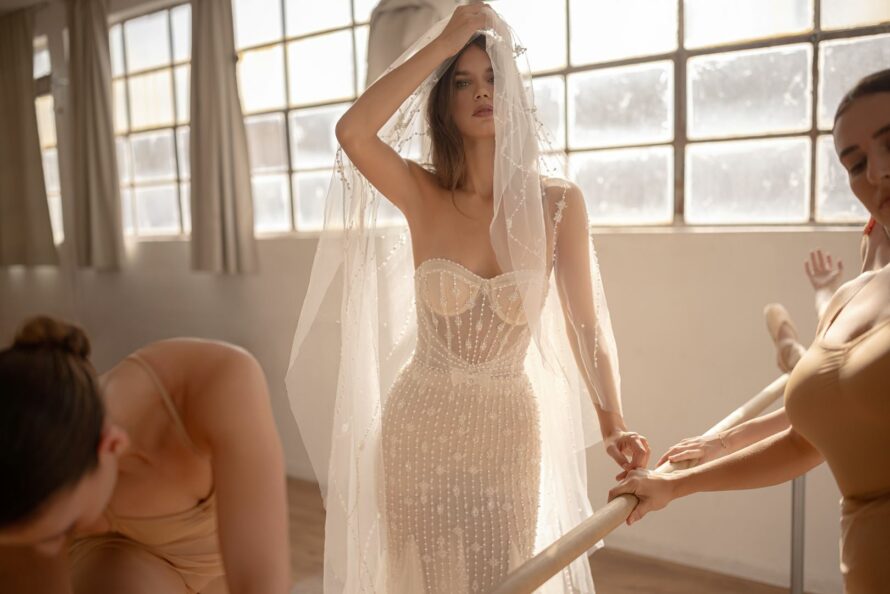When we think of brides, the iconic picture that springs to mind is the long white or ivory gown with a veil and a floral bouquet, but in many countries around the world wedding dresses are far more colourful and elaborate. Here are pictures of just some of the rather amazing bridal traditions from across the globe:
This Taiwanese bride wears a red gown, following the Chinese tradition, for the traditional formal wedding banquet hosted by her family. She also wears a phoenix crown, the traditional headpiece of the Ming Dynasty.
Image: Alex Aguirre PhotographyThis Mexican bride wears the traditional feathered headdress that forms part of the traditional Mexican ceremony called “Amarre de tilmas”. Modern Mexican brides are now more likely to wear western style white dresses.
Image: Bella NaijaNigerian brides wear a beautiful coloured head scarf known as a gele, and tying the gele is almost a ceremony in itself and is certainly a rite of passage for Nigerian brides.
This Igbo bride from Nigeria is taking part in the main part of the wedding ceremony where the bride comes out in her best outfit and kneels before her father for his blessing. She is given a glass of palmwine and then has to hunt for her groom and share the palmwine with him when she finds him.
This Mayto bride is from a small ethnic group in north-eastern Hungary. The wedding outfit reflects the folk costume of the Matyo and features an embroidered shirt and long skirt. The bride also wears a headpiece with pom-pom shaped ornaments that keep the head straight.
Pakistani brides will wear a number of outfits in different colours for different parts of their wedding. This bride is taking part in the Baraat or Walima functions, where brides usually wear Lehnga or Gharara outfits in red, maroon and pink, accessorised with heavy jewellery.
This Polish bride wears a wianek, a flowered headpiece that symbolises innocence. She will take off the headpiece as part of the oczepiny ceremony which is about accepting a new bride into a group of married women
Image: Daniel Zain PhotographyThis Malay bride wears an embroidered baju kurung, the traditional Malay dress for women. She also wears a tudung, which is a hijab or headscarf to cover her hair, with a selendang, or embroidered and beaded shawl over the top. A crown placed on top of the shawl signifies her importance for the day.
Greek brides usually wear western style white wedding dresses, but what sets them apart is the traditional wedding crown that is placed on the head of both the bride and groom during the wedding ceremony. After the exchange of rings the crowns are swapped between the bride and groom’s heads three times. They symbolise the crowns that are waiting in heaven, and the fact that the bride and groom are king and queen of a newly created family.
This Kosovan bride has had her face painted in an ancient tradition intended to ward off the evil eye and discourage gossip and speculation. The painted face, when combined with an elaborate costume, gives the bride the appearance of a living doll.
Although most Norwegian brides now wear white wedding dresses, some still choose to wear more traditional Bunad costumes. These outfits are very elaborate with embroidery, scarves, shawls and hand-made silver or gold jewellery. The headdresses are particularly ornate and indicate the wearer’s social and marital status.
In Indonesia each ethnic group has a different style of wedding dress. This Javanese bride wears a black robe adorned with brass and gold ornaments and an elaborate headpiece featuring jasmine flowers.
This Japanese bride is cutting the wedding cake at her reception. For the wedding ceremony Japanese brides wear a pure white kimono, which is then covered with a brightly coloured silk kimono with nature inspired patterns for the reception. The reception is the last chance for the bride to wear this style of kimono as they are reserved for young, unmarried women.
Balinese brides wear complex outfits that include many symbols that are part of the Payas Bali or Balinese bridal tradition. For examples the headdress will include artificial gold flowers that represent beauty and the dot on the bride’s forehead represents the bride’s holy spirit.
This Hindu Indian bride wears red as it is considered the most auspicious colour. As well as elaborate gold jewellery she also has henna painted on her hands. A Hindu wedding takes place over several days and the bride will have a new outfit for each day.


